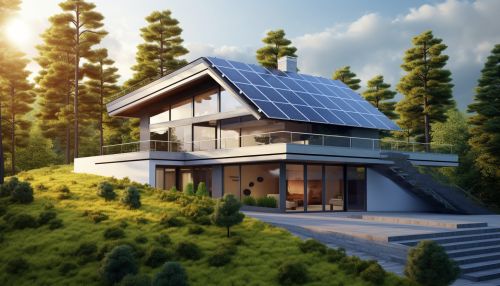Sustainable energy
Introduction
Sustainable energy refers to the provision of energy that meets the needs of the present without compromising the ability of future generations to meet their own needs. Sustainable energy sources include all renewable sources, such as hydro, solar, wind, wave, geothermal, and tidal power, and also technologies designed to improve energy efficiency.
Renewable Energy Sources
Renewable energy sources are energy sources that are continually replenished. These include energy from water, wind, the sun, geothermal sources, and biomass.
Hydropower


Hydropower is the largest source of renewable energy in the world. It uses the energy of flowing or falling water to generate electricity. Hydropower plants can also be designed to provide peaking power through the use of water storage or run-of-river schemes that do not have storage.
Solar Power
Solar power is the conversion of sunlight into electricity. This can be done directly using photovoltaics, or indirectly using concentrated solar power. Photovoltaics were initially used to power small and medium-sized applications, but are now also used for large-scale power generation and to power homes.
Wind Power
Wind power is the use of air flow through wind turbines to provide the mechanical power to turn electric generators. Wind power is a popular sustainable, renewable energy source that has a much smaller impact on the environment compared to burning fossil fuels.
Wave and Tidal Power
Wave power is the capture of energy from waves on the surface of the ocean. It is a form of renewable energy that can help to reduce our reliance on fossil fuels. Tidal power, also called tidal energy, is a form of hydropower that converts the energy of tides into electricity or other useful forms of power.
Geothermal Power
Geothermal power is power generated by geothermal energy. Technologies in use include dry steam power stations, flash steam power stations, and binary cycle power stations. Geothermal electricity generation is currently used in 26 countries.
Biomass
Biomass is biological material derived from living, or recently living organisms. It most often refers to plants or plant-derived materials which are specifically called lignocellulosic biomass. As an energy source, biomass can either be used directly via combustion to produce heat, or indirectly after converting it to various forms of biofuel.
Energy Efficiency


Energy efficiency is the goal to reduce the amount of energy required to provide products and services. Improvements in energy efficiency are generally achieved by adopting a more efficient technology or production process. There are many motivations to improve energy efficiency. Reducing energy use reduces energy costs and may result in a financial cost saving to consumers if the energy savings offset any additional costs of implementing an energy-efficient technology.
Sustainable Transport
Sustainable transport refers to the broad subject of transport that is sustainable in the senses of social, environmental and climate impacts. Components for evaluating sustainability include the particular vehicles used for road, water or air transport; the source of energy; and the infrastructure used to accommodate the transport.
